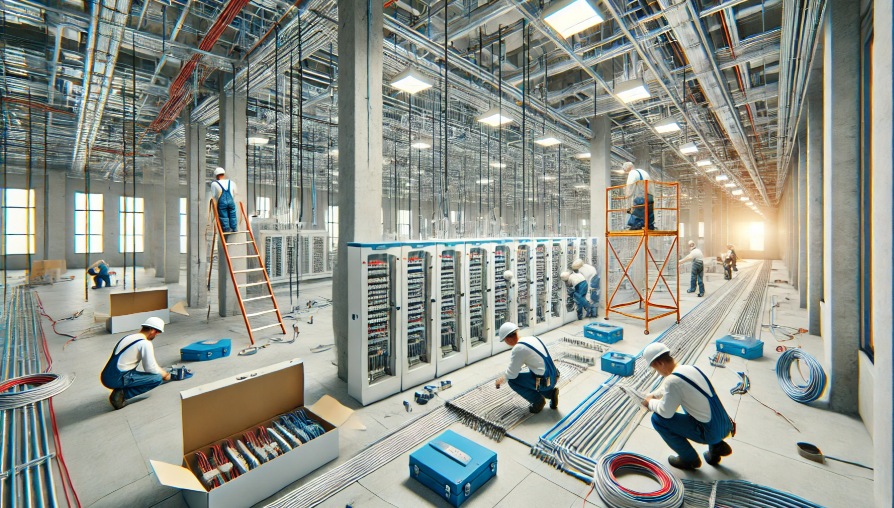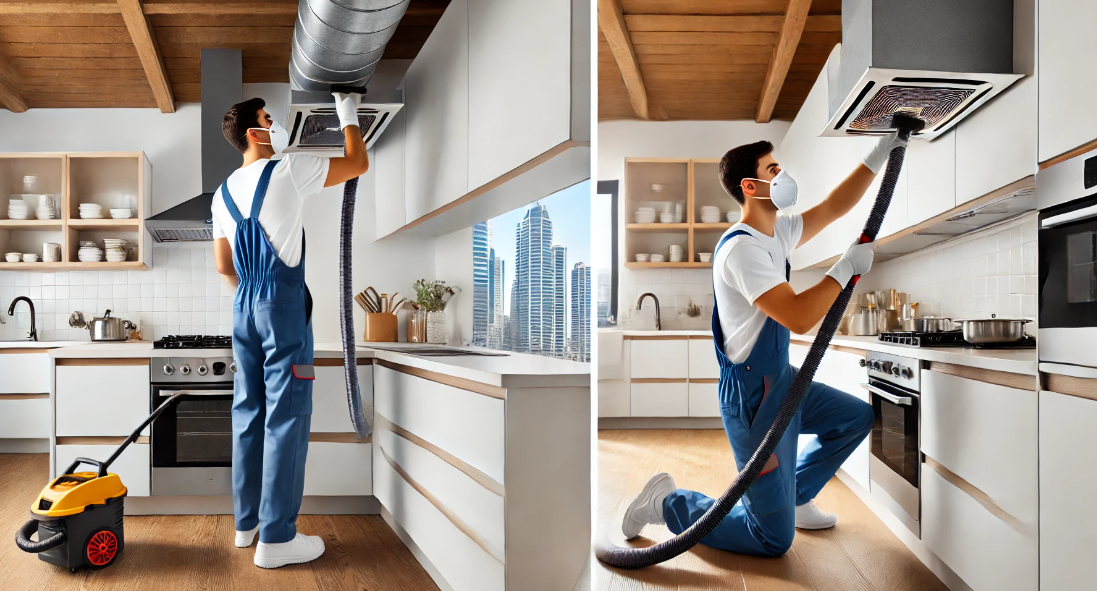Plumbing is one of those things we rarely think about—until something goes wrong. Whether it’s a leaky faucet, a clogged drain, or low water...
Electrical Installation in Building Construction: Powering Modern Structures
Electrical installation in building construction is a critical process that goes beyond simply connecting wires; it enables safe and efficient power distribution, bringing modern structures to life. The primary goal of electrical installation is to provide a smooth, reliable power supply to essential components, such as lighting, heating, appliances, and security systems, while minimizing hazards associated with electrical faults. This article will explore the key components of electrical installation, including wiring, outlets, electrical panels, and lighting systems, as well as the installation process from planning to testing.
Introduction to Electrical Installation in Building Construction
Electrical installation in building construction involves designing, installing, and testing systems to ensure safe and efficient power distribution. This process encompasses everything from wiring to control panels, creating a reliable power supply that supports a building’s functional and safety needs.
Key Components of Electrical Systems in Building Construction
- Wiring: The backbone of electrical systems, consisting of conduits, cables, and wires that safely conduct electrical current throughout the building. Use high-quality conductors, like copper, for better conductivity and lower resistance, ensuring wiring meets local electrical codes and has insulation suited for the installation environment.
- Electrical Panels: Serving as control centers, electrical panels house circuit breakers to protect the system and maintain safety. Select panels from reputable manufacturers with sufficient capacity to handle current and future electrical loads.
- Outlets and Switches: Critical points for power access and control, allowing users to access and manage electricity safely. Use durable, high-quality outlets and switches, including GFCI and AFCI outlets in moisture-prone areas, to enhance safety.
- Lighting Systems: Lighting provides essential illumination for safety, function, and comfort. Opt for energy-efficient LED lighting, which offers longer lifespans and lower energy consumption. Ensure that light fixtures are rated appropriately for their environments to prevent hazards.
Process of Electrical Installation in Building Projects
- Planning and Design: In the planning and design phase, engineers assess the building’s electrical load requirements, carefully determining the power needs for various systems like lighting, outlets, and specialized equipment. They create detailed circuit layouts that efficiently distribute power throughout the building, keeping in mind future expansion needs. Engineers also prioritize safety by ensuring the design complies with all local and national electrical codes, including necessary safety measures such as grounding, circuit protection, and emergency systems.
- Installation: During installation, electricians follow the design blueprint to install wiring, panels, outlets, and lighting fixtures. Each component is installed with precision, keeping wiring lengths optimal and panels accessible for future maintenance. Special attention is given to areas with specific power needs, such as HVAC systems or high-demand equipment, to ensure the system functions effectively.
- Testing and Inspection: In the final phase, rigorous testing and inspections are conducted to confirm the system’s safety, functionality, and reliability. Technicians verify that all components operate within design specifications, and inspections ensure full compliance with safety standards. This comprehensive approach guarantees that the electrical installation is both safe and reliable, ready for operational use.
Regulations and Standards in Electrical Installation
- Dubai Electrical Wiring Regulations and DEWA Standards: These govern all installations, ensuring safety and efficiency.
- Load Calculations and Code Compliance: Accurate load calculations and code compliance, as required by DEWA, are essential for meeting safety standards.
- Grounding and Bonding: Following DEWA and IEC guidelines, grounding and bonding practices are vital for protection against electrical hazards.
Common Electrical Configurations in Construction
- Branch Circuits: Distribute power to specific areas within the building, like individual rooms, ensuring efficient and safe power flow. These circuits help maintain stability and reduce overload risks.
- Feeder Circuits: Feeder circuits play a critical role by delivering power from the main supply to various distribution points throughout the building. These circuits support the branch circuits by feeding power into them from central distribution boards, ensuring an even and reliable supply across the entire electrical system. Proper feeder circuit design is essential to handle the building’s overall load requirements and ensure operational efficiency.
- Service Entrance: The service entrance serves as the primary link between the building’s electrical system and the external power grid. It brings power into the building, connecting to the main breaker or distribution panel that controls and distributes electricity throughout. This crucial entry point is designed to handle high current safely, acting as the gateway for reliable power supply from the utility provider.
Installation Methods in Building Construction
- Conduit Wiring: Involves placing electrical wires within protective metal or plastic conduits, which shield them from physical damage and environmental hazards, enhancing both durability and safety.
- Cable Tray Wiring: Offers an organized approach to managing electrical cables, commonly used in commercial settings. This method provides a structured route for cables, allowing for easier maintenance and improved airflow around the wires, which helps minimize the risk of overheating and ensures compliance with safety regulations.
Transparent and Affordable Cost Solutions
At Green Tech, we believe in transparent pricing and offer cost-effective solutions tailored to your budget. Whether you need a simple repair or a comprehensive installation, our team provides detailed quotes to keep you informed, with competitive rates that prioritize value and affordability.
About Green Tech
Established in 2018 in the UAE as Al Baraha General Building Maintenance, Green Tech, now officially known as Fast Green Technical Services, is a Dubai Government Licensed provider specializing in professional electrical installations and building maintenance. Renowned for our commitment to quality, safety, and community trust, we deliver efficient and reliable electrical solutions for residential and commercial clients across the region.
Why Choose Green Tech Services for Your Electrical Installation Needs
At Green Tech, our team is comprised of licensed professionals trained to meet the highest standards in electrical safety and efficiency. With years of experience across residential and commercial projects, Green Tech is dedicated to delivering dependable, top-quality service. We use only the highest quality materials and the latest tools, ensuring every installation is safe, efficient, and built to last. Our strict protocols and attention to detail mean you can trust our work to stand the test of time.
Contact Us
Ready to upgrade your electrical system? Contact Green Tech today for a free consultation and discover how our expert team can meet your needs. Call us at +971502839208 or reach out via our online form. Secure your peace of mind with Green Tech — the community’s preferred choice for reliable, economical, and high-quality electrical solutions.
You can read more about Electrical Services
Benefits of Annual Maintenance Contracts (AMCs)
With an Annual Maintenance Contract from Green Tech, you’re covered year-round. Our AMC clients benefit from priority scheduling, reduced rates, and peace of mind knowing that their electrical systems are regularly maintained for optimal performance.



